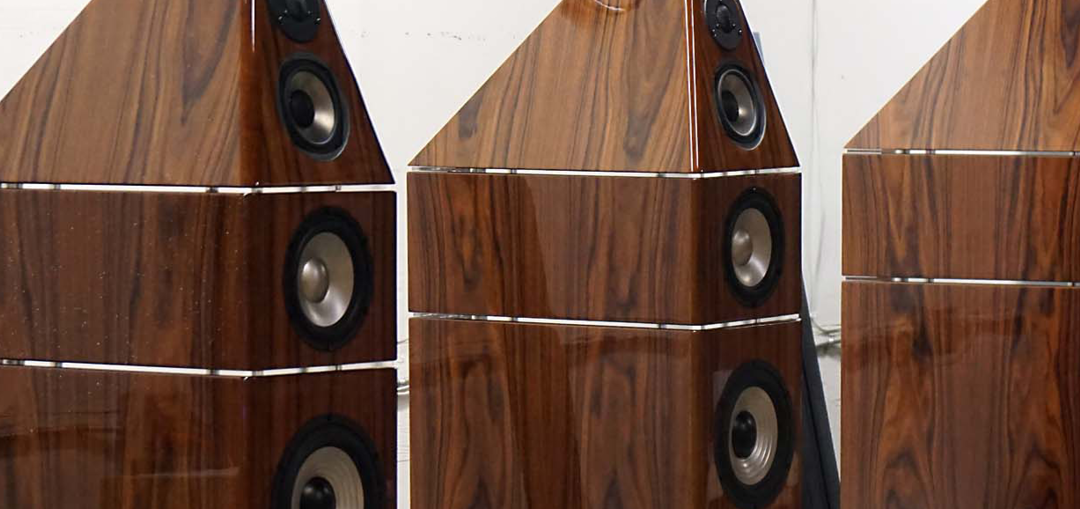Audiophiles often speak about “synergy” between components. In my experience the two most important interfaces are amplifier/speaker — which is the topic of this blog — and the speaker/room, which I will write about in a future blog. The impetus for this blog was an unanticipated, yet very favorable experience.
I first met Genesis owner and designer Gary Koh, and first heard the Genesis Maestro loudspeakers, at an event at the VPI House in NJ (my home state). I was immediately impressed — very impressed — with the Maestros, and approached Gary about becoming a dealer. (Stay tuned for some exciting developments on the horizon for Genesis representation in the NY/NJ/CT area). In the year since, Gary and I had a very successful showing at CAF, and a terrific two day event at my showroom (ah, sweet memories of pre-COVID times). I’ve learned a lot about audio (and music) from Gary, in particular of course about the Maestros. The more familiar I become with the Maestros, the more impressed I am with them.
As some of you may know, I am a dealer for Merrill Audio products, my enthusiasm for which goes back to my days as a reviewer, before I began Distinctive Stereo. Currently, my reference amps are the Merrill Audio Element 116 monoblocks (MSRP $24,000). With 300W into 8 Ohms, 600W into 4 Ohms, and 1200W into 1 Ohms, they can power pretty much any speaker on the market, including those that present a particularly challenging load (electrostats’ and speakers with large or multiple woofers, for example). The combination of Genesis Maestro speakers and Merrill Audio Element 116’s is a match made in heaven. Both are incredibly fast and extremely low in distortion, which allows one to hear what is on the recording, rather than the “sound” of the playback equipment.
I also carry amplifiers from the well-established British company, Chord. I currently have in my showroom the stereo Chord Etude (150W/channel, MSRP $5,300) and the stereo Chord CPM 3350, the predecessor to the Chord Ultima 5 (300W/channel, MSRP $11,900). Chord does make much more expensive amplifiers, but I find the Etude and CPM 3350 to have very high performance/price ratios. I have tried the CPM 3350 with a variety of speakers, ranging in price from about $5,000 to almost $40,000. It generally performs very well, though with larger speakers it lacks some of the speed, control and low distortion of the Element 116’s. Lest I be misunderstood, my intent is not in any way to denigrate Chord amps; I think they are excellent — if I felt otherwise, I wouldn’t carry them. But as noted, the CPM 3350 is considerably less expensive than the Element 116’s, and is nowhere near the top of the Chord line. So what exactly is my point?
I recently hooked up the Chord 3350 with the Genesis Maestros. My expectation was that they would sound okay, but not great. I was wrong. (My ex-wife’s three favorite words to hear me say!) While the overall presentation was not as quick, precise, detailed, and controlled as with the 116’s, it was darn good. Surprisingly good. In fact, it was excellent. This was in marked contrast to when I paired the 3350 with other larger speakers, in which case they sounded (relatively speaking) somewhat sluggish and lacking in energy as compared to when driven by the more expensive 116 monoblocks. (Again, not in any way meant as an indictment of the 3350, and certainly not of Chord.) For (as the saying goes) sh*ts and giggles, I replaced the CPM 3350 with the Chord Etude. Keep in mind that I was now powering a pair of $36,000 speakers with an amp costing $5,500. (The upstream components were not exactly shabby: VPI Avenger Reference turntable with Ortofon 95 cartridge; Merrill Audio Jens phonostage; Merrill Audio Christine preamp; Aurender N10 or EMM Labs NS-1 music server; EMM Labs DAC2x; cables mostly from Genesis, with some from Merrill Audio.) While certainly not as good as the CPM 3350, the sound was still incredibly good; in fact, in many ways, it was better than many megabuck systems I have heard.
So what is it about the Maestros that makes them work so well with lower-tier amplifiers? Gary confirmed that as I expected, a large part of it is due to the servo-bass. Paraphrasing from my exchange with him:
“The external amp only has to drive the speaker from about 120Hz upwards. The built-in servo-bass senses the signal from the amp, and translates that to drive-through the woofers. That is how I achieve coherence unlike many other semi-active speakers.
“Sensitivity and impedance also play a part. My speakers are easy to drive, unlike my design predecessor.”
Am I going to get rid of the Merrill Audio Element 116’s? Nope. (At least, not until I can afford the Element 118’s!) However, listening to the Maestros powered by the 3350 (and even by the Etude) is a thoroughly enjoyable experience. This property of the Maestros has a significant real-life benefit for end-users. Generally speaking, each time an audiophile upgrades, he or she loses money because the components become out of balance. That is, as the electronics get better the speaker becomes the limiting factor, or visa versa, and they find themselves in an expensive game of audio ping-pong. But with the Maestros, a music lover can buy the speaker of their dreams (and trust me when I say that the Maestros are indeed the stuff of which dreams are made), power it with a modest amp; then; when finances allow, spend their hard-earned cash upgrading their amp for even better sound. Truly a win-win situation!
Laurence Borden
January 7, 2020

